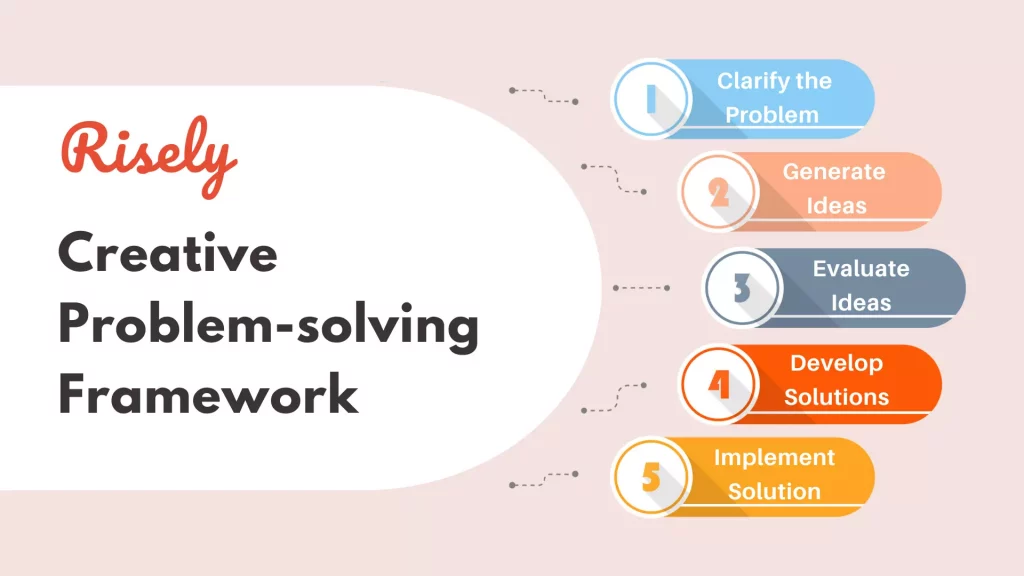Creative Problem Solving Tips for any Challenge
When we face challenges, the path ahead can often seem like a maze with no clear direction. Obstacles can come in the form of workplace hurdles, personal life quandaries, or complex, real-world issues. But fear not, because creative problem-solving is a universally empowering tool that everyone can tap into. By thinking outside the box and redefining the boundaries of possibility, we can transcend the typical and find solutions that are both innovative and effective.
In this article, we navigate through various creative problem-solving techniques that can help you conquer any challenge. These tips are designed to spark your imagination, fuel your determination, and direct your journey through the convoluted terrain of problem-solving.
Understand the Problem Deeply
Before you can solve a problem, you need to understand it—and not just on the surface level. Dive deeper by asking the ‘Five Whys’. This means, when you encounter a problem, ask ‘why’ to dig further into the underlying cause. Continue asking ‘why’ five times or more until you find the root issue. Once you grasp the core of the problem, it becomes easier to address it in a meaningful way.
Reframe the Question
Many times, the way we frame a problem can limit our solutions. If we rephrase the question or challenge, it can open up new avenues for thought. For example, instead of asking, “Why can’t we attract more customers?”, reframe it as “How can we make our customer experience unforgettable?” A subtle shift in questioning can lead to dramatically different ideas.
Embrace Diversity of Thought
Solving complex challenges often requires a mix of perspectives. Surround yourself with a diverse team of thinkers: the analytical, the free spirits, the methodical planners, and the wild card with out-of-the-box ideas. Each perspective serves as a piece of a larger puzzle, and when they come together, they produce a more comprehensive solution.
Incubate Your Ideas
The phrase ‘sleep on it’ holds more wisdom than we often acknowledge. After you’ve worked on a problem, take a break. Allow your subconscious to process the information. This technique, known as ‘incubation’, often leads to that ‘eureka!’ moment when an idea clicks effortlessly into place.
Flip the Problem
If you’re hitting a wall, try flipping the problem on its head. Look at your challenge from an entirely different angle. For instance, if you are trying to decrease production costs, consider instead how you might increase the value. This inversion can sometimes make the solution more apparent or lead to more innovative approaches.
Go for Quantity in Brainstorming
During brainstorming sessions, aim for a large quantity of ideas without judging their quality. Let the creativity flow without censorship. It’s about generating a wide pool from which you can later select the best options. A seemingly outrageous idea might contain the seed of an ingenious solution.
Get Visual with Mind Maps and Flowcharts
Sometimes words can restrict us. A visual approach can uncover connections you might otherwise miss. Mind maps allow you to brainstorm in a non-linear fashion, while flowcharts can help delineate the steps of a process and identify bottlenecks. Either tool can clarify the elements of a problem and shine a light on potential solutions.
Build on Existing Ideas
You don’t always have to reinvent the wheel. Look at solutions that have worked in similar contexts and adapt them to your situation. Combining different successful strategies can sometimes produce a tailor-made solution for your particular problem.
Employ SCAMPER
SCAMPER is an acronym that stands for: Substitute, Combine, Adapt, Modify, Put to another use, Eliminate, and Reverse. It’s a checklist you can use to think about a product or process in different ways. For example, you might substitute one material for another to reduce cost, or reverse the order of a process to increase efficiency. Each prompt gives you a fresh lens through which to view the problem.
Set Constraints
Paradoxically, constraints can boost creativity. They narrow the field and force you to think with focus. Set time limits, financial caps, or resource boundaries to push your creativity into new territories. It’s often within these constraints that the most innovative solutions are born.
Practice Active Listening
In group problem-solving scenarios, practice active listening. This doesn’t just mean hearing what others say, but truly understanding the intent, emotion, and logic behind their words. This can lead to a deeper comprehension of the problem and foster collaboration that brings the group closer to a solution.
Take a Break with Lateral Thinking Exercises
When you need a break from direct problem-solving, engage in lateral thinking exercises. These can be riddles, puzzles, or thought experiments that require unconventional approaches. They recalibrate your brain and can lead to insights that apply to your main challenge.
Implement and Adapt
Once you’ve landed on a promising solution, put it into action. Be flexible, though; no solution is perfect right from the start. Be prepared to fine-tune your approach, adapting to reality as you go.
Learn from Failures
Embrace the idea that failure is not a dead-end but a stepping stone. Each attempt provides valuable information about what does and does not work. Analyze your failures, learn from them, and iterate.
In Conclusion
Creative problem-solving isn’t just about flashes of brilliance; it’s about a courageous and relentless pursuit of solutions. It’s a process anyone can master with the right mindset and tools at their disposal. It’s about seeing a challenge not as a barrier but as a puzzle waiting to be solved. With these tips, you’re now equipped to take on any problem that comes your way. Remember, it’s not just about finding any solution; it’s about crafting the creative solution that pushes boundaries and exceeds expectations. Happy problem-solving!



